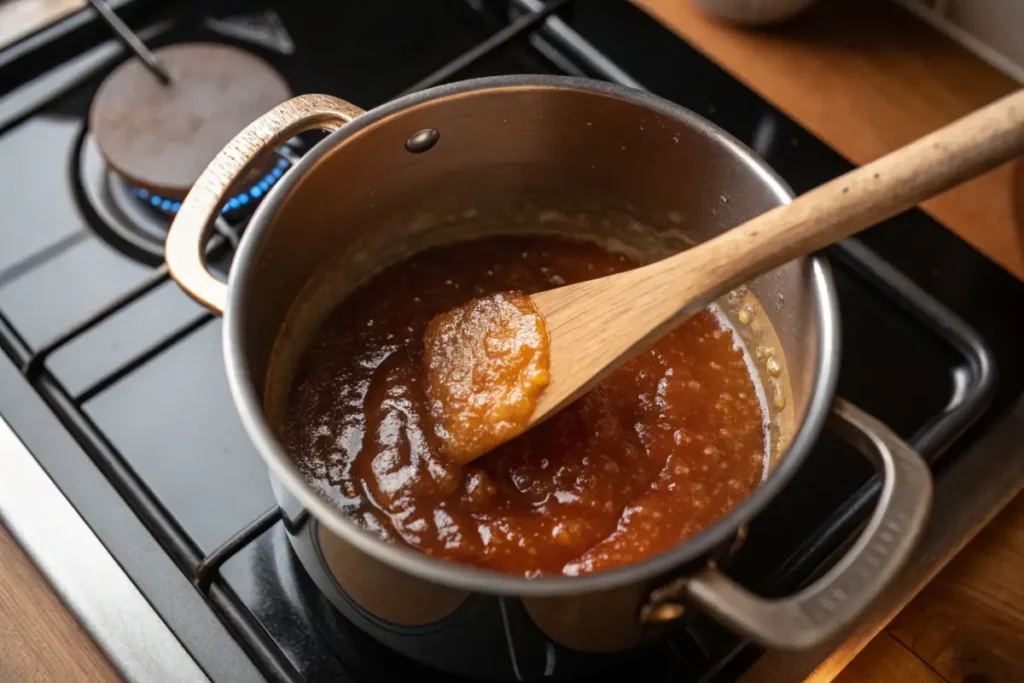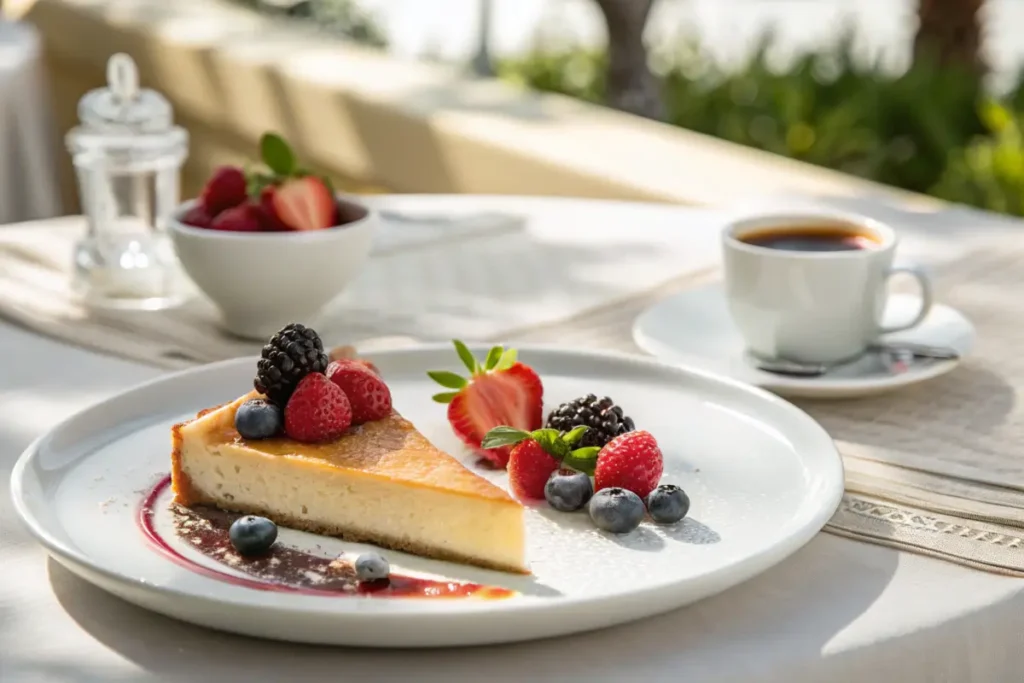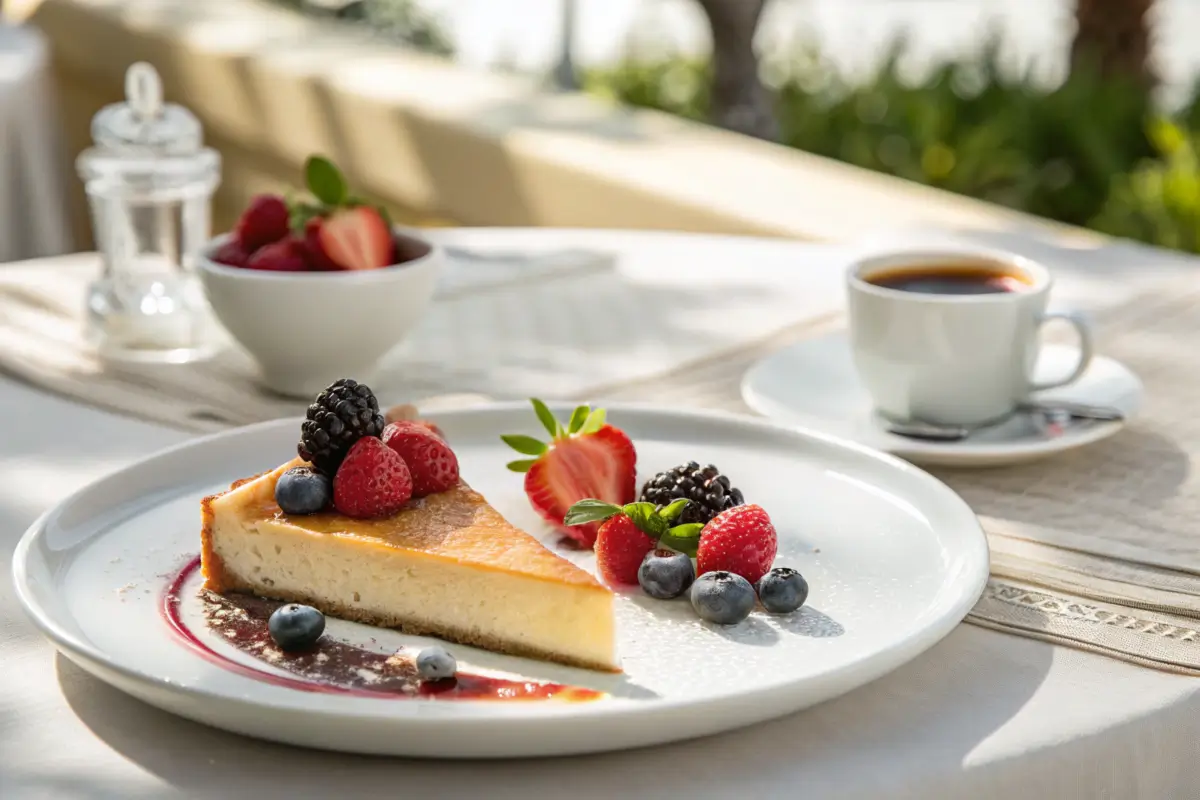A creamy, caramel-topped custard revealing how to craft authentic quesillo from scratch, plus tips, variations, and serving ideas.
Quesillo is a cherished custard dessert often associated with Venezuelan culture. However, this creamy caramel delight also appears in various Latin American cuisines. Basically, it is famous for its velvety texture and deep caramel flavor. Consequently, it stands out as a special treat for celebrations, family gatherings, and holidays. Moreover, quesillo represents something beyond a mere dessert. Indeed, it symbolizes a culinary tradition that connects multiple generations. Likewise, it provides an accessible recipe for anyone wanting to explore Latin desserts. Altogether, learning to prepare quesillo at home can be both fulfilling and fun.
Initially, many people confuse with other custard desserts, like flan. Nevertheless, quesillo has its own unique identity. Specifically, it often includes more eggs, resulting in a richer and thicker consistency. Eventually, understanding its nuances helps you appreciate its distinct character. Therefore, let’s examine every aspect of quesillo, from origins and ingredients to techniques and creative twists. Furthermore, we will cover serving suggestions and proper storage tips. Finally, we’ll answer common questions to ensure you feel confident making and enjoying quesillo.
Understanding quesillo: Origins and Cultural Roots
Quesillo emerged as a beloved Latin American dessert, chiefly associated with Venezuela. Comparatively, it holds a status similar to flan, yet retains its own charm. Accordingly, families have passed down recipes for generations. Consequently, this has kept the tradition alive and thriving. Indeed, its widespread popularity stems from its simplicity and affordability. Eventually, as immigrants shared their recipes across borders, quesillo gained recognition in various countries.
Historical Background of quesillo
Undoubtedly, the earliest roots of quesillo date back to colonial times. Initially, Spanish settlers introduced custard-like sweets, including flan and caramel desserts. Conversely, local cooks adapted these recipes using regional ingredients. Thus, quesillo was born, blending European techniques with Latin flavors. Subsequently, it took on special meaning during holidays like Christmas and Independence Day. Generally, people served it as a luxurious homemade dessert. Meanwhile, in rural areas, it also became a symbol of hospitality. Ultimately, quesillo remains an integral part of Venezuela’s dessert heritage.
Culturally, quesillo stands for comfort and familiarity. Especially in Venezuelan homes, it is common to find it at family gatherings. Moreover, many consider it a dessert that brings people closer, forging bonds over shared plates. Furthermore, the recipe varies slightly from region to region, reflecting the ingredients available locally. Hence, you may find subtle differences in sweetness, consistency, or flavor profiles. Nonetheless, the essence of quesillo never changes, reminding everyone of home and tradition.
Mastering Traditional quesillo Ingredients
Crafting an authentic quesillo involves selecting a handful of quality ingredients. Initially, you start with eggs, sweetened condensed milk, whole milk, and sugar. Likewise, many recipes call for vanilla extract, though this can vary. Particularly, the ratio of eggs to milk influences the dessert’s thickness. Basically, more eggs yield a richer custard. Equally important is the sugar that forms the caramel. Eventually, as you master these components, you’ll produce a flawless quesillo every time.
Selecting the Best Dairy for quesillo
When choosing dairy, freshness is paramount. Consequently, opt for high-quality whole milk and premium condensed milk. Generally, fresh dairy ensures better flavor and smoother consistency. Comparatively, lower-quality ingredients may result in a less impressive dessert. Furthermore, try different brands to discover the best taste profile. Indeed, subtle variations in sweetness can influence the final product. Another tip: consider using organic or local milk for a richer, creamier custard. Moreover, always check expiration dates to ensure the freshest possible ingredients.
Additionally, you can experiment with flavor enhancements. For example, a hint of citrus zest adds brightness. Likewise, a dash of rum or coconut milk introduces complexity. Basically, feel free to adapt your quesillo to personal preferences. Nonetheless, start with the classic recipe to appreciate its pure essence. Afterward, add your own twist to create a signature dessert that reflects your culinary style.
Step-by-Step Guide to Making quesillo at Home

Initially, preparing quesillo might seem challenging. Nevertheless, it’s simpler than you think. First, caramelize sugar in a heatproof pan until it becomes amber-brown. Carefully swirl it to coat the bottom. Consequently, this forms the luscious caramel layer. Next, blend eggs, condensed milk, whole milk, and vanilla extract until smooth. Pour this mixture over the caramel base. Subsequently, place the dish in a water bath and bake until set. Finally, once it cools, invert it onto a plate. Thus, you reveal a glossy caramel surface atop a creamy custard.
Common Mistakes to Avoid When Making quesillo
Basically, even small errors can affect the final texture. However, you can prevent these mishaps with a few simple tips. Conversely, rushing the caramel stage can cause bitterness. Therefore, heat your sugar slowly over medium heat and watch closely. Likewise, avoid overmixing the custard, as this can introduce bubbles. Particularly, strain the mixture to remove any lumps.
Furthermore, keep an eye on the baking process. Eventually, an overbaked quesillo may turn rubbery. Consequently, test doneness by inserting a knife near the center. If it comes out clean, remove the dessert from the oven. Equally, let it cool before unmolding. Generally, patience ensures a smooth release. Undoubtedly, practice makes perfect. After trying the recipe a few times, you’ll master the art of making quesillo.
Ways to Serve and Enjoy This Caramel Custard Dessert
Quesillo is versatile in presentation. Thus, feel free to personalize the serving style. Eventually, consider serving it chilled with a spoon of whipped cream. Comparatively, fresh berries add color and a tangy contrast. Another option: serve it alongside a small espresso. Additionally, drizzle a bit of extra caramel sauce if you like sweetness.
Moreover, thoughtful garnishes make a difference. For instance, a mint leaf or orange zest strip elevates its appearance. Consequently, guests will appreciate the attention to detail. Basically, keep the plating simple to let quesillo shine. Finally, remember that this dessert pairs well with fruit salads or tropical cocktails. Indeed, it adapts well to various culinary contexts, making it perfect for any occasion.
Furthermore, consider serving quesillo as part of a dessert buffet. Accordingly, it stands out among cakes and pastries. Particularly at events, quesillo surprises guests with its silky texture. Nonetheless, no matter how you serve it, this caramel custard always pleases.
Healthier Twists and Variations on the Classic Recipe
Occasionally, you may want a lighter version of quesillo. Hence, experiment with low-fat milk or reduced-sugar condensed milk. Consequently, the result remains creamy but with fewer calories. Similarly, plant-based milks allow dairy-free variations. Thus, vegans can enjoy quesillo-inspired desserts by using tofu or aquafaba instead of eggs.
Moreover, introduce exciting flavors. Comparatively, add coconut milk for tropical flair. Basically, whisk in cocoa powder for a chocolate twist. Conversely, a splash of rum or coffee adds depth and sophistication. Likewise, aromatic spices like cinnamon or nutmeg create cozy holiday versions. Eventually, these adaptations let you explore new taste experiences.
Nevertheless, always test small batches first. Indeed, some substitutions affect texture or setting time. Furthermore, monitor sweetness levels when altering ingredients. Altogether, with a bit of creativity, you can transform quesillo into a dessert that suits your dietary preferences and flavor cravings.
Storing and Serving Suggestions for Maximum Freshness

Quesillo tastes best when fresh, but you can store it for a few days. Consequently, always refrigerate it in an airtight container. Generally, it keeps well for about three days without losing quality. However, avoid letting it sit at room temperature for long. Eventually, exposure to heat or humidity affects its texture.
Likewise, handle it gently when transporting. Particularly if you’re taking it to a party, keep it chilled. Additionally, protect the glossy caramel top by covering it loosely. Afterward, serve it as soon as possible. Moreover, if any leftovers remain, slice and store them separately. Undoubtedly, proper storage ensures each slice tastes just as delicious as the first.
Finally, remember that freshness matters. Consequently, plan ahead and prepare quesillo close to the serving date. Meanwhile, if you prefer making it in advance, do so only a day or two before your event. Indeed, this strategy preserves its flavor and creaminess, guaranteeing a successful dessert presentation.
Frequently Asked Questions
What is quesillo made of?
Quesillo typically includes eggs, condensed milk, whole milk, and sugar. The sugar is caramelized to form a sweet, golden layer. Because these ingredients blend harmoniously, the result is a rich, Learn More
What is the meaning of quesillo?
The word “quesillo” literally means “little cheese” in Spanish. However, in this context, it does not refer to actual cheese. Rather, quesillo is a caramel custard dessert known for its smooth, sliceable texture. Comparatively, its name refers to its consistency, which can resemble a cheese-like solid, even though it’s not cheesy in flavor. Learn More
Is quesillo the same as mozzarella?
No, quesillo and mozzarella are entirely different. Quesillo is a dessert, while mozzarella is a type of cheese. Conversely, quesillo relies on eggs and sweetened milks to create a custard, whereas mozzarella is a savory cheese made from buffalo or cow’s milk. Basically, they share a somewhat similar name, but they belong to distinct culinary categories. Learn More
What is the difference between flan and quesillo?
Flan and quesillo are both caramel custards, yet they differ in texture and richness. Generally, quesillo uses more eggs, giving it a denser, creamier body. Flan often has fewer eggs, resulting in a lighter texture. Additionally, some versions of quesillo incorporate condensed milk, which provides extra sweetness and thickness. Ultimately, both are delicious, but tends to be richer and silkier. Learn More
Conclusion
In essence, quesillo embodies tradition, comfort, and culinary artistry. Therefore, understanding its roots allows you to appreciate its cultural significance. Furthermore, mastering the basic ingredients and techniques helps you create a flawless dessert every time. Additionally, experimenting with variations and lighter options keeps fresh and exciting.
Moreover, serving it with care and creativity ensures a memorable dessert experience. Comparatively, stands out among custard treats for its distinctive texture and rich taste. Altogether, it offers a delightful end to any meal. Eventually, after practicing the recipe several times, you’ll gain confidence and skill. Undoubtedly, will become a star dessert on your table. So, go ahead and indulge in this caramel custard perfection, sharing it with family and friends.

